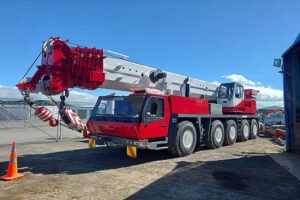
Performance as well as safety in the modern maritime environment depend on effective and unambiguous communication. Particularly with regard to controlling onboard communication systems Marine electronics have evolved into a necessary component of vessel operation. From little fishing boats to big commercial ships, the move from analog equipment to sophisticated digital gadgets has altered crew member coordination, information sharing, and connectivity with offshore stations. These devices are meant to simplify every facet of both internal and outside communication in addition to navigation and safety.
Good onboard communication influences operational efficiency and safety directly, not only convenience. Marine electronics become crucial in linking personnel, ship systems, and marine authorities thanks to real-time data interchange, better signal transmissions, and clever integration across many systems. Their influence on daily communication has helped define contemporary marine operations’ benchmark.
VHF and Digital Radio Real-Time Communication
Modern VHF (Very High Frequency) radios and digital radio systems constitute among the most important developments in marine communication. Standard aboard practically every vessel, these devices are the main means of voice communication across short and medium distances. Through improved signals, greater ranges, and more dependability under demanding sea conditions, today’s marine electronics improve VHF radio capabilities.
Between ships and shore stations, digital radio systems—including DSC—Digital Selective Calling—offer safe and direct channels of communication. Without speaking, crew members can quickly convey position reports or emergency alarms, therefore minimizing uncertainty under demanding circumstances. These days, advanced radios are not only a voice communication tool but also a source of vital position and tracking data since they are linked with GPS and AIS systems.
This produces a more organized and receptive onboard communication scene. From engine room crew to bridge officials, everyone stays linked to improve response time and lower chance of misinterpretation.
Combining Voice with Information Using Satellite Communication Systems
Conventional radio systems can not be sufficient for boats running far from coastal areas. In such situations, satellite communication has changed everything since it provides constant, worldwide coverage. No matter the location of the vessel, marine electronics with satellite connectivity let conversation and data exchange possible.
High-speed internet supported by modern satellite systems lets you send massive data files, video conversations, and real-time messages. For commercial ships, research vessels, and remote expeditions requiring continuous communication with headquarters or support teams ashore, this is very important. Beyond business correspondence, satellite connectivity enhances crew welfare by enabling personal contact with family and friends over extended missions.
Integration of satellite systems with the communication system of the ship helps onboard teams to have constant connection. Along with daily communication, this helps remote diagnostics, regulatory reporting, and emergency cooperation.
Improving Coordinating with PA Systems and Intercom
Effective operations of a vessel depend on clear internal communication between several sections. Being smarter and more flexible, marine electronics have enhanced conventional intercom and public address (PA) systems. Advanced intercom systems guarantee messages are transmitted clearly and immediately in larger boats when crew members operate across several levels and compartments.
These systems nowadays are made to withstand hostile sea conditions—moisture, vibration, and noise. Improved clarity and speaker volume adjustments help to guarantee that directions are heard even in noisy engine rooms or during bad weather. Furthermore many contemporary PA systems can be connected to emergency alarms, enabling automatic announcements when fire alarms, abandon-ship orders, or other important events.
Additionally supporting two-way communication and real-time departmental input are marine intercoms. This simplifies daily coordination among bridge, deck, and engine room staff as well as repairs and maintenance visits.
Integrated Communications Interfaces and Smart Displays
Smart displays and integrated control panels combining communication tasks with navigation, weather data, and safety monitoring have evolved from marine electronics. These interfaces consolidate control so that crew members may handle alarms, radios, intercoms, satellite links, and radios from one screen.
Integrated communication systems lower operator learning curves and help to lower human error risk. Touchscreens, voice-activated controls, and configurable settings let one effectively manage communication under different environments. In an emergency where quick response is needed, this is particularly useful.
Furthermore facilitating departmental cooperation is a centralized center for communication. The whole crew can rapidly access information including route modifications, docking instructions, or weather alerts. These clever interfaces increase operational control and team cooperation by connecting communication tools with other vessel systems.
Supporting Emergency Response Plans and Safety Policies
Any ship’s first concern is always safety, hence emergency reaction depends mostly on communication. During a crisis, marine electronics are meant to give fast, accurate, dependable communication. Devices such AIS (Automatic Identification Systems) and EPIRBs (Emergency Position-Indicating Radio Beacons) assist in sending distress signals to coastal stations and surrounding vessels.
Reliable communication guarantees crew members in real events or emergency drills know what to do and where to go. Faster and more ordered reaction results from voice announcements, alarms, and visual displays. All of which depend on instantaneous communication, marine electronics also support man-overboard systems and fire detection networks.
Direct links to medical care centers, rescue teams, and coast guards, as made possible by advanced technology, enable This increases the possibility of good results by allowing real-time coordination for medical emergencies or search and rescue activities. Simply said, the foundation of every maritime safety procedure is these systems.
Conclusion Marine Technology Strengthens Communication
Marine electronics have revolutionized vessel communication—internal among the crew as well as outside with ports, authorities, and support services. Communication on board is now faster, clearer, and more consistent as smarter, more linked technologies replace out-of-date systems. From worldwide satellite links and centralized smart displays to short-range VHF radios, every component is vital in maintaining operations free from hazards.
Investing in marine electronics for any modern vessel is not only a technological improvement but also a means toward increased safety, efficiency, and professional performance on the sea. Strong communication is the basis of everything, thus ships are more ready to face the demands of the modern marine environment.



